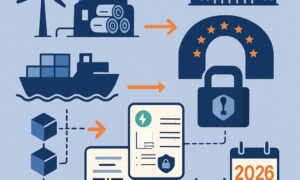Understanding Self-Directed Retirement Accounts
Self-directed retirement accounts, including self-directed IRAs and 401(k)s, empower investors to diversify far beyond conventional stocks and bonds. These accounts open the door to alternative investments such as real estate, private equity, and precious metals. This expanded toolkit offers the potential for strong returns, but it adds significant complexity and requires a higher degree of due diligence. For those eager to shape their own financial destiny, PathFinder Retirement provides tools and support to manage these alternative accounts actively.
However, navigating self-directed options means taking on additional responsibilities. Investors must have a thorough understanding of alternative asset classes and the ability to evaluate them objectively. Without experienced guidance, mistakes can be costly and even jeopardize retirement goals.
Potential Risks and Challenges
Venturing into self-directed retirement accounts exposes participants to a host of unique risks. Investments outside the mainstream can be especially susceptible to fraudulent schemes and illiquidity. The U.S. Securities and Exchange Commission (SEC) and the North American Securities Administrators Association (NASAA) frequently issue alerts to educate individuals about risks, including high fees and asset mismanagement, that can derail even the savviest investors.
Unlike traditional brokerage accounts, oversight for alternative investments is less stringent. This lack of oversight increases exposure to bad actors and heightens the risk of loss due to inadequate vetting. Managing these pitfalls requires a careful, informed approach at every step of the investment process.
The Importance of Professional Guidance
One of the most prudent decisions self-directed investors can make is to partner with a qualified financial professional. Professional advisors possess both the expertise and resources to vet non-traditional investments, conduct thorough due diligence, and objectively assess their compatibility with long-term financial goals. This guidance is even more important when retirement security is at stake, given that unmonitored choices can have lasting consequences.
Financial advisors not only help in selecting appropriate assets, but they also play an essential role in risk management. Their experience in navigating regulatory nuances and market volatility equips them to protect client portfolios from unforeseen threats.
Benefits of Partnering with a Financial Advisor
- Expertise in Alternative Investments: Financial advisors are well-versed in evaluating illiquid or unconventional assets. They rely on proven analysis practices to help determine suitability and potential returns.
- Risk Management: Advisors can identify, diversify, and mitigate risks throughout each phase of the investment lifecycle. This proactive approach helps safeguard retirement savings against fraud and market downturns.
- Regulatory Compliance: Advisors monitor IRS rules and ensure compliance, helping investors avoid prohibited transactions that often result in steep penalties or account disqualification.
Real-World Insights
Evidence from recent decades, particularly the 2008 financial crisis, underscores the importance of professional guidance in mitigating severe investment losses. Studies have found that investors who worked closely with fiduciary advisors typically experienced smaller drawdowns compared to do-it-yourself investors. This resilience is especially important during periods of high volatility—times when impulsive decisions are most likely to occur (CNBC analysis).
Case studies also suggest that ongoing advisor relationships can encourage disciplined investing, prevent emotionally driven decisions, and promote strategies tailored to each life stage.
Developing a Comprehensive Retirement Strategy
Financial advisors serve as partners in crafting retirement income plans that address essential factors such as longevity, market risk, inflation, and asset allocation. Rather than adopting a “set it and forget it” mentality, advisors proactively adapt strategies as circumstances change. Techniques like bond laddering, dynamic withdrawal systems, and asset location optimization are often employed to ensure a client’s savings last a lifetime.
Personalization remains central; no two retirement journeys are the same. Advisors consider unique goals, time horizons, and risk tolerances when designing tailored, holistic plans to maximize security and confidence throughout retirement.
Tax Efficiency Considerations
Tax-efficient planning is a pivotal element of wealth preservation in retirement. Through advanced strategies—such as Roth conversions, tax-loss harvesting, and strategic asset allocation—experienced advisors help investors minimize liabilities and retain a greater share of their nest egg. Small reductions in annual taxes can lead to significant growth over the course of decades, thereby protecting purchasing power and funding a more robust retirement lifestyle.
Final Thoughts
Self-directed retirement accounts are powerful vehicles for building retirement wealth, enabling unparalleled flexibility and diversification. However, the journey can be fraught with challenges, from fraud risk to regulatory complexity and tax inefficiency. Engaging with a professional financial advisor provides a critical safeguard—offering the insight, strategy, and risk controls necessary to navigate these accounts wisely. Together, these measures elevate the growth and security of retirement savings for years to come.



































